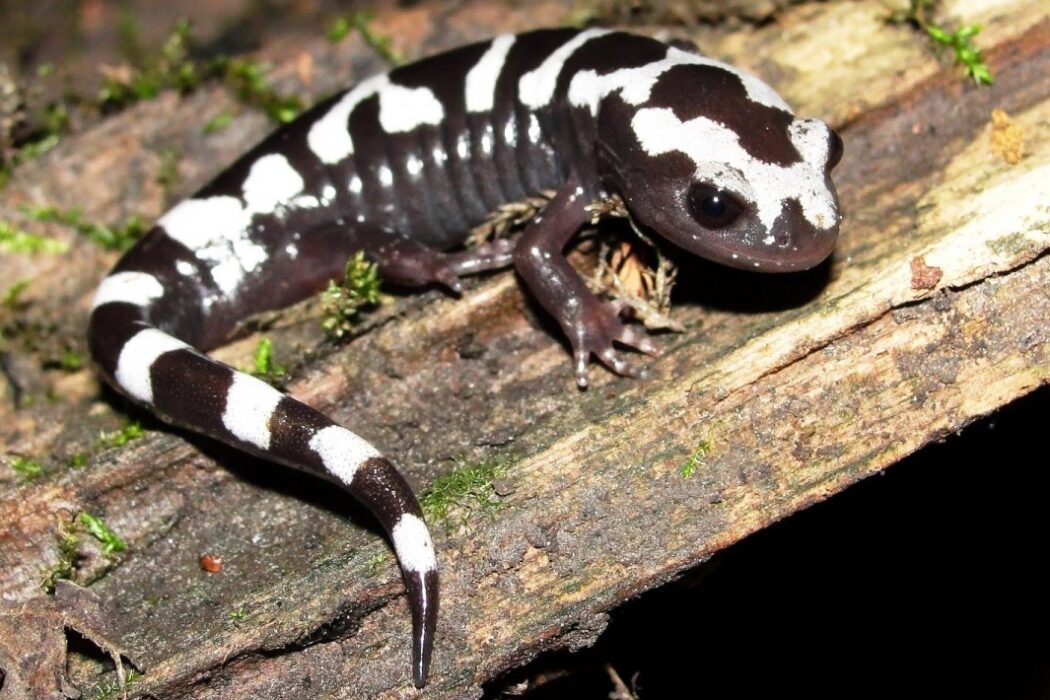Fore limb usually possess 4 toes.
Marbled salamander defense.
Marbled salamander in boone county.
Marbled salamanders grow to about 3 5 4 25 in 9 10 7 cm in size and are stout bodied and chubby in appearance.
Dorsal or back side of the salamander.
Orifice past the hind legs of a salamander costal grooves.
Skin glands on neck back and shoulder which secretes neurotoxin for defense mechanism.
The marbled salamander varies in length from 9 10 7 cm 3 5 4 2 in.
The marbled salamander is a stocky boldly banded salamander.
Marbled salamanders are late summer to early fall breeders.
Defense mechanisms like all salamanders the marbled salamander has the ability to remove its tail with an ability called autotomy.
Salamander larvae feed on plankton and aquatic insects.
Both males and females typically migrate to the area surrounding a dry vernal pool in september and october.
Like most of the mole salamanders it is secretive spending most of its life under logs or in burrows.
Muscular tail used for swimming.
The diet of adult marbled salamanders includes earthworms insects crickets ants snails and slugs.
Hind limb usually possess 5 toes.
Marbled salamanders and the department of defense the marbled salamander ambystoma opacum is one of the more commonly found mole salamanders on military installations.
This and many other amphibians require small fishless woodland.
The bands of females tend to be gray while those of males are more white.
How to setup a simple but effective terrarium for a marbled salamander or any salamander that requires cool temperatures and moist conditions.
The latin word opacum means shaded dark obscure or dim and refers to the adult dorsal color pattern.
Marbled salamanders spend most of their lives in self excavated burrows or those dug by small mammals and are most commonly found in deciduous or mixed pine forests on sandy soil.
The marbled salamander is one of many amphibians found in the bottomland hardwood forests of mississippi.
The tail of the salamander has the ability to be removed without hurting the salamander itself well the tail is removed and wriggles about in front of a predator the salamander can run away and seek a place to.
This secretive salamander spends most of its time under rocks logs or forest debris preferring forested areas.
It may also occur in open sandy woods and on rocky dry hillsides.
A small stout bodied salamander this species is easily identified by its distinct black and white patterning across its entire body.
Adults can grow to about 11 cm 4 in small compared to other members of its genus.
The body is black with light bands of varying widths running across the back.

